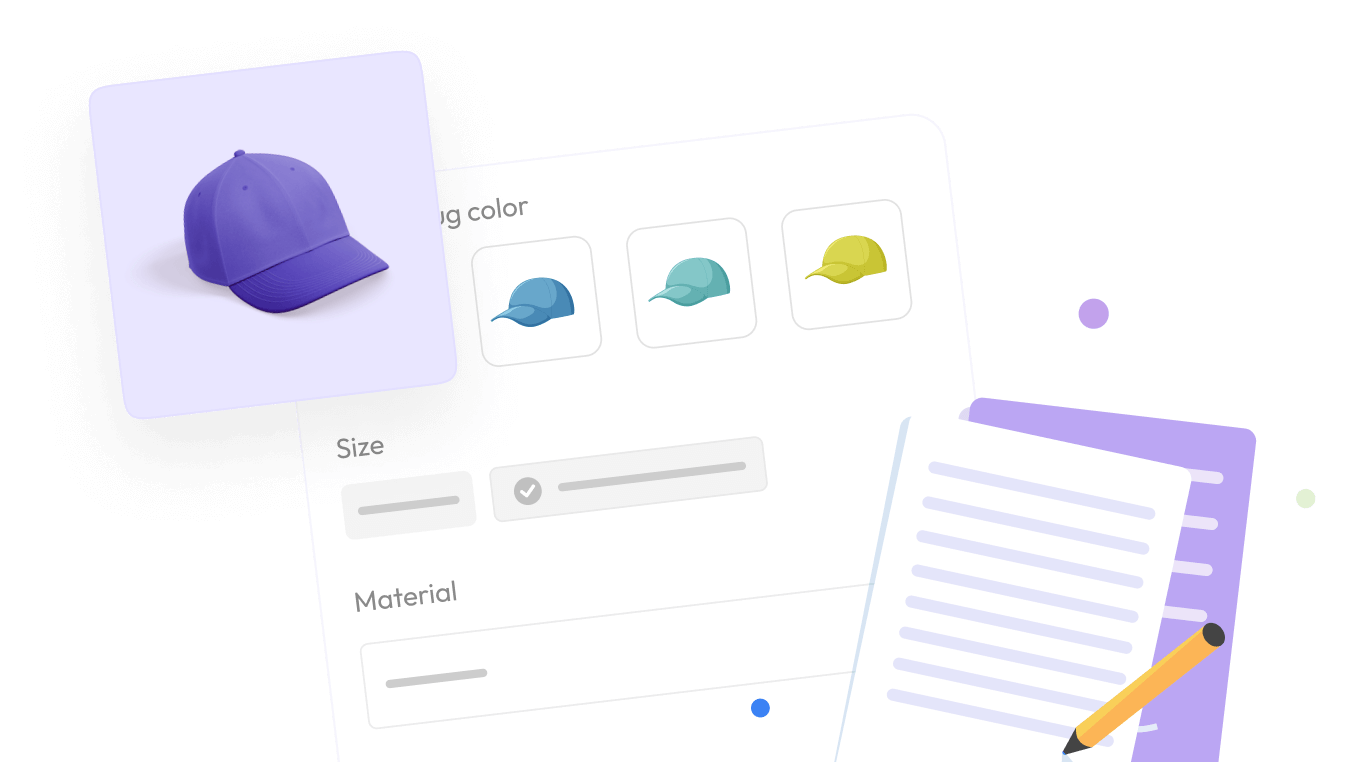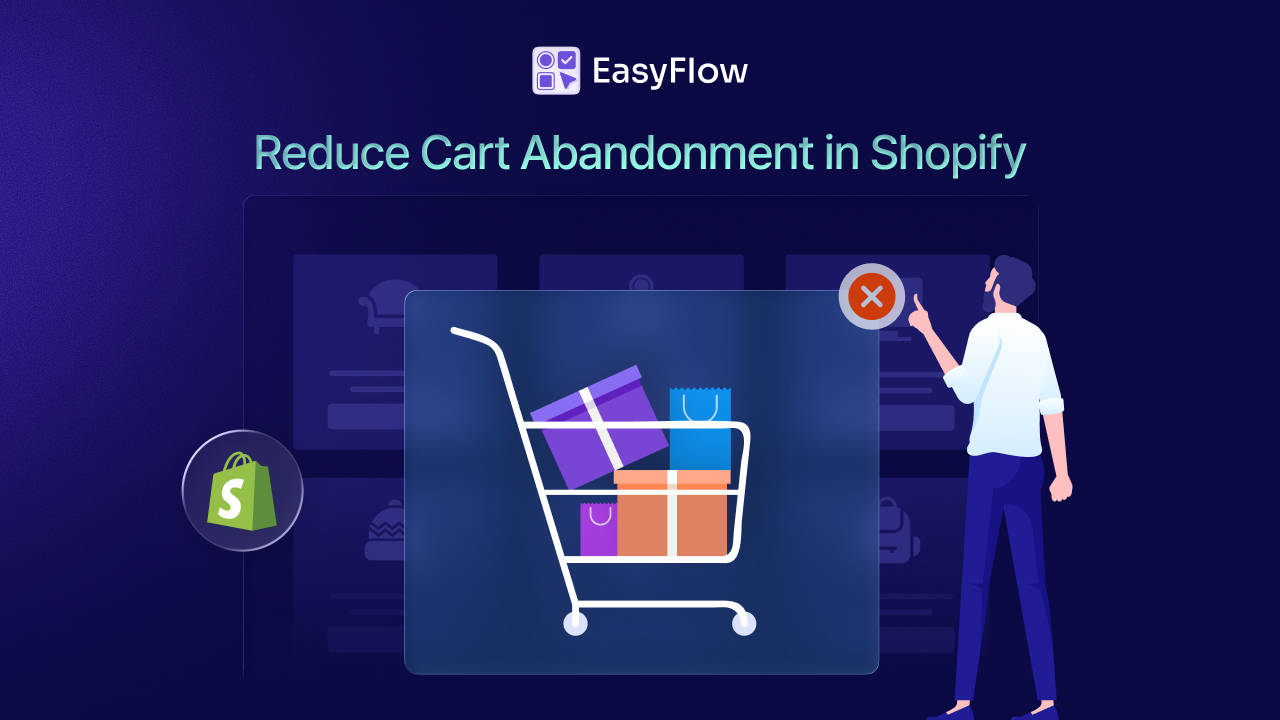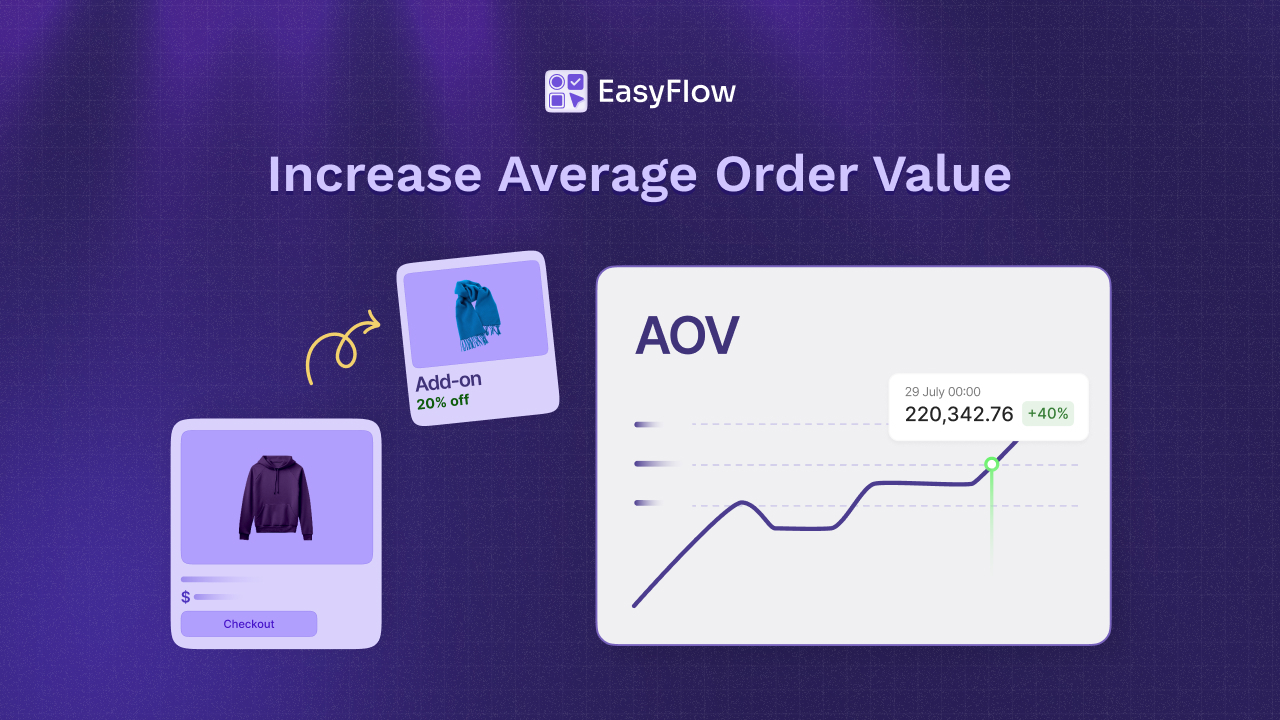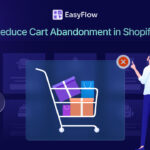Looking for real product-page examples you can learn from – without guessing what actually works? This article curates Shopify stores using custom product options that present personalization clearly, minimize friction, and guide shoppers to confident choices. We are not claiming their sales numbers yet; we are showing presentation patterns that consistently improve UX for Shopify product personalization, so your sales see the numbers even beyond your expectations.

From clean labels and helper text to smart tips for product customization, like conditional reveals and transparent add-on pricing, these Shopify stores using custom product options are like a guide to follow to reach your store’s goals.
So, you can use the store listed here as a pattern library: scan the examples, note what to personalize products with (text fields, uploads, swatches, checkboxes), and follow the tactics to your own custom engraving products or gift flows – then implement them quickly with EasyFlow.
💡 Why Merchants Offer Custom Product Options
You might be thinking: “Why should I offer custom product options?” Well, here is why: personalization is a game-changer. When customers have the chance to customize their purchases, they feel a personal connection to the product. It is no longer just an item on a shelf – it is something made just for them.
When you personalize products, you shrink decision friction: fewer comparisons, clearer expectations, and a product that feels “for me.” That’s why simple, well-explained inputs – especially for custom engraving products – raise confidence and reduce support tickets.
- For customers, this means they get to express their individuality. Maybe it is a gift for a loved one with a personal engraving, or perhaps it is a custom design that fits their style perfectly. These options transform a regular product into something meaningful.
- For you, the merchant, custom product options help you increase your average order value (AOV). Plus, Shopify product personalization allows you to offer premium options for a slightly higher price. And, as a bonus, personalized items are hard to compare, which means customers will be less likely to shop around. Plus, they are more likely to come back for more.
🛍️ Shopify Stores Using Custom Product Options (What to Follow)
Let us take a peek at some stores with custom product options that are nailing the art of Shopify product personalization. These stores have found clever, effective ways to incorporate custom options that not only improve the shopping experience but also help boost their bottom line.
How We Chose These Examples
We selected stores based on five practical criteria you can replicate today (no external revenue data required):
- Clarity: Labels, helper text, limits, and examples make inputs foolproof.
- Restraint: Only essential options—no option fatigue.
- Logic: Conditional fields keep pages tidy and relevant.
- Monetization: Fair, visible add-on pricing where it helps.
- Mobile UX: Fields are legible, tap-friendly, and quick.
1. Artisaire – Design Your Own Products

Custom Options: Image Upload, Text Field, Dropdown, Checkbox, etc.
Why It Works: Artisaire’s custom product choices (wax seals, for example) are a standout example of how Shopify stores using custom product options can make a timeless product feel fresh and unique. Customers can upload their designs, choose the color, and add personal text for engraving.
This seamless process allows customers to create something personal, and it is super easy to use. Whether it is for a wedding invitation or a special event, customers love the chance to craft a custom, meaningful product that they can treasure forever.
Criteria Met: Clarity, Restraint, Logic, Monetization, Mobile UX, and more.
What to Follow:
- Pair every paid add-on (engraving, for example) with a tiny benefit line (“+1–2 days for custom work”) to set expectations.
- Add a helper note like “We engrave exactly what you type” and a character limit – classic tips for product customization that prevent rework.
Watch-outs: Block emojis/special characters and show a text preview for Shopify product personalization.
2. Suta – Gift Wrapping and Personalization Options

Custom Options: Checkbox (Gift Wrapping), Text Input (Gift Message), etc.
Why It Works: Suta knows that gifting is all about the details. They offer personalized gift wrapping and a space for customers to add a message. These options do not just add value – they uplift the entire shopping experience.
Simple customizations like these create a more thoughtful, tailored shopping journey. It is a great example of how a small change, like a checkbox for gift wrapping, can make your products feel even more special and increase the value of your store.
Criteria Met: Clarity, Restraint, Logic, Mobile UX, etc.
What to Follow:
- Use a simple checkbox (“This is a gift”) to personalize products only when relevant; reveal the message field conditionally.
- Add tone/length guidance in helper text (something like, “Up to 200 characters; we print as written”).
Watch-outs: If gift wrap is paid, the surface add-on cost should be visible near the checkbox (for transparent monetization).
3. Pela – Customizable Phone Cases
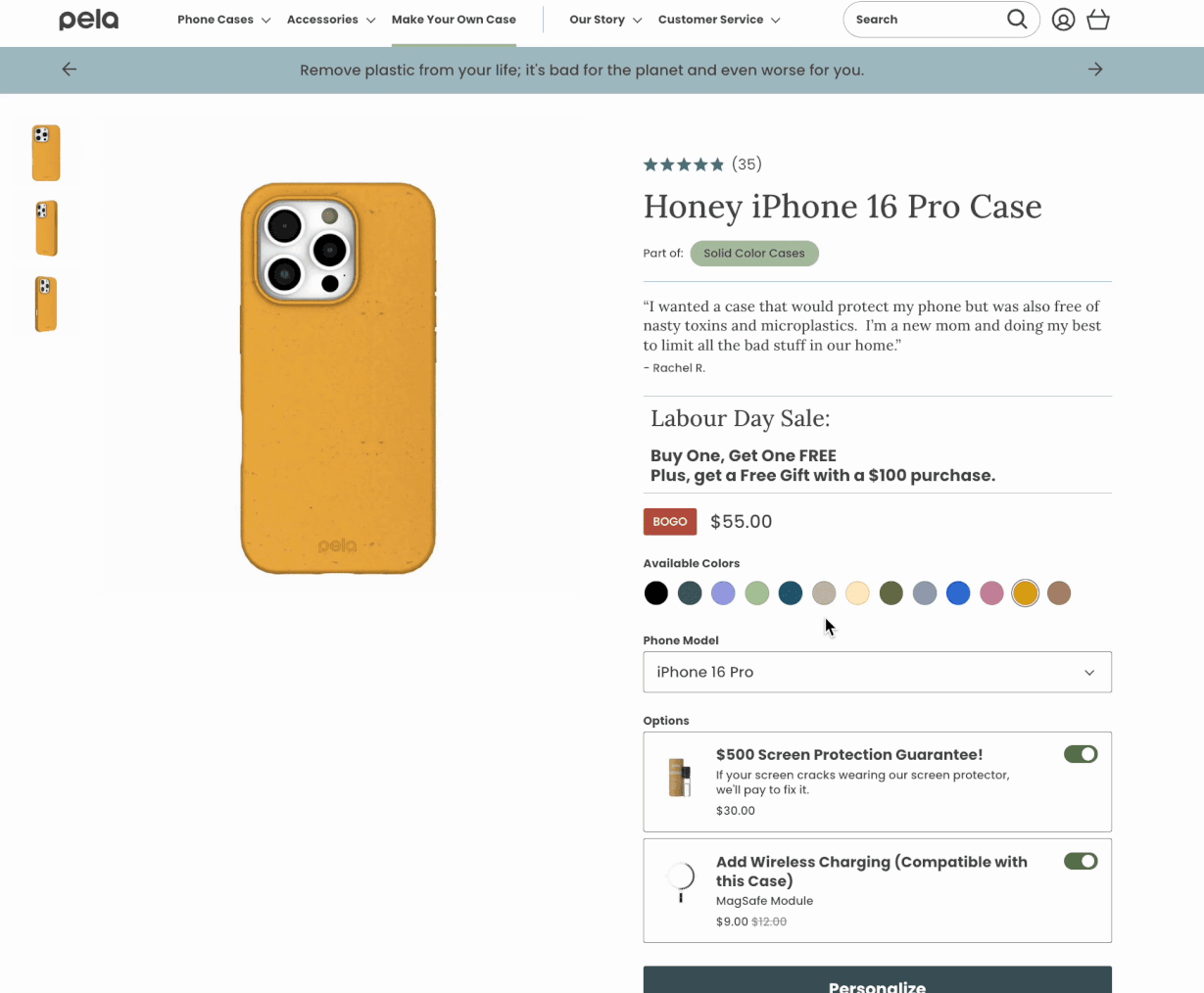
Custom Options: Image Upload, Text Field, Dropdown, Checkbox, etc.
Why It Works: Pela’s eco-friendly phone cases are another prime example of how Shopify stores using custom product options cater to customers’ needs and preferences. By allowing customers to upload their own images and add custom text, they have created a unique way for people to personalize products they use every day.
With a clean, simple customization process, customers can easily design their ideal phone case while also supporting a sustainable brand – a perfect match for today’s conscious consumer.
Criteria Met: Clarity, Logic, Mobile UX
What to Follow:
- Combine image upload + text with clear specs (JPG/PNG; min width; max file size).
- Place file guidance right under the field; consider a light thumbnail preview.
Watch-outs: Remind users not to upload screenshots; enforce file-size validation – smart tips for product customization that protect production.
4. Gemini Melissa – Personalized Embroidery

Custom Options: Dropdown (Embroidery Option), Text Field (Personalized Name) and more
Why It Works: Gemini Melissa takes a traditional gift and adds a personal twist with custom embroidery. Customers can select the embroidery location and input their desired text, whether it is a name or a special message.
The ease of personalization, paired with the emotional value of the product, makes this a standout example of how Shopify stores using custom product options can engage customers on a deeper level. This is ideal for special occasions like baby showers or birthdays.
Criteria Met: Clarity, Restraint, Monetization
What to Follow:
- Use a dropdown for embroidery location, then a single-line text for the name; add casing examples (“J.M.” vs “JM”).
- If embroidery costs extra, show the price data next to the field.
Watch-outs: Add a soft warning about symbols; cap characters to avoid stitch crowding – great for both custom engraving products and stitched monograms.
5. Letfordyr – Custom Engraving Products
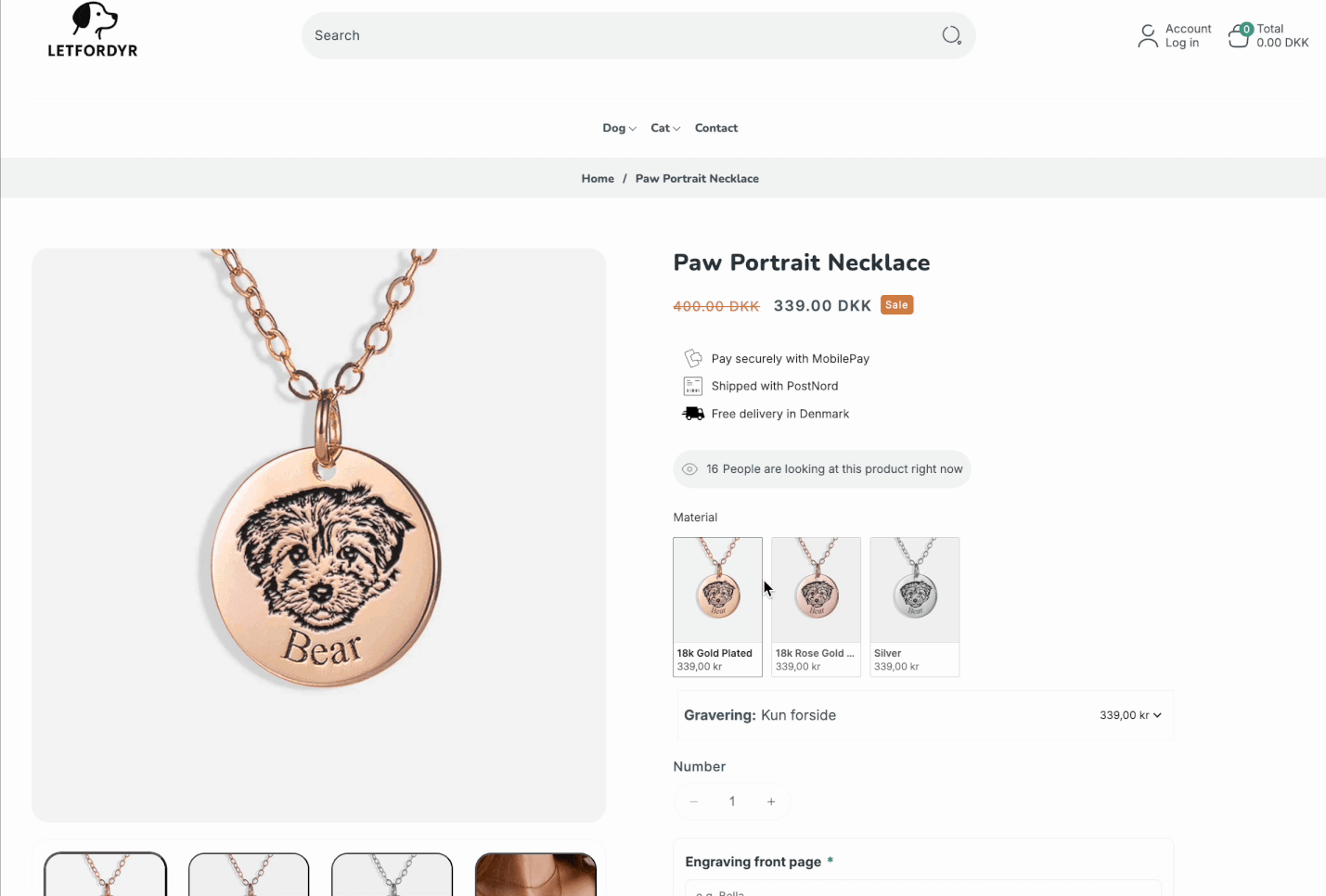
Custom Options: Text Field (Engraving), Image Upload (Pet Photos) and others
Why It Works: Letfordyr allows pet owners to personalize custom engraving products and upload images of their pets. The process is quick and straightforward, and customers can instantly feel a connection to their purchase.
For pet lovers, this option is irresistible. Letfordyr has tapped into a niche market while offering personalization that has real sentimental value. It is a smart move that keeps customers coming back to celebrate their pets.
Criteria Met: Clarity, Logic, Monetization, Mobile UX
What to Follow:
- Offer image upload with aspect-ratio tips (“subject-centered; well-lit”) and a short checklist before upload.
- Add line-by-line engraving fields with live character count for tight layouts.
Watch-outs: Auto-reject low-resolution images; surface a small retouch fee if applicable – usable Shopify product personalization in practice.
6. FunLifeNow – Personalized Gears

Custom Options: Text Fields (Name, Size), Checkbox, etc.
Why It Works: FunLifeNow makes it easy for sports and handmade craft fans to show their spirit by personalizing their collectibles with names and numbers. This simple customization is a winner, especially for gifts or fan memorabilia.
What is great about this is how it targets a specific audience and creates an option that speaks directly to their interests, leading to a more engaged and loyal customer base.
Criteria Met: Restraint, Clarity, Mobile UX
What to Follow:
- Keep it to two fields (Name, Number) with sample text; that restraint speeds decisions and reduces errors.
- Show a simple text preview; it is enough for customers to confirm spelling.
Watch-outs: Warn about trademarked names/logos to avoid fulfillment issues – critical tips for product customization.
7. Elite Recovery Supply – Customizable Households

Custom Options: Dropdown (Interior Liner, Roll Up Cover), Addons, etc.
Why It Works: Elite Recovery Supply offers household items with customizable features, like the interior liner and roll-up cover. This customization allows customers to make a high-ticket item feel like it has been crafted just for them.
Big-ticket items can benefit from personalization, too. By letting customers have a say in how their product looks and functions, you are not only offering value – you are also making a large investment feel more personal.
Criteria Met: Clarity, Logic, Monetization
What to Follow:
- Use dropdowns for liner/cover choices; add tiny visual swatches if possible.
- Explain trade-offs (“Thicker liner = warmer, slower fill”) so customers choose confidently.
Watch-outs: For high-ticket items, repeat chosen options in cart confirmation – clean Shopify product personalization builds trust.
🎉 EasyFlow: Add Custom Product Options to Your Shopify Store

Now, you might be thinking, “This all sounds great, but how do I get started?” That is where EasyFlow comes in. It is a simple yet powerful Shopify app that lets you add all sorts of custom options to your product pages without the headache of coding.
Here is how EasyFlow can help:
- Reusable Option Sets: Create custom option sets for multiple products, saving you time and effort.
- Conditional Logic: Show or hide specific options based on the customer’s previous choices, ensuring the page stays clean.
- Add-On Pricing: Easily charge extra for premium customizations, like engraving or custom printing.
- Validation: Set character limits, allowed characters (no emojis), and file size/type rules.
- User-Friendly Setup: No tech skills required! EasyFlow lets you create and manage your custom options effortlessly.
- Styling: Match your theme spacing and typography so options feel native on mobile.
With EasyFlow, setting up custom product options is quick and hassle-free, giving you more time to focus on growing your business.
💡 What to Follow from These Stores/Pages (Checklist)
To make sure your Shopify stores using custom product options see the success you are expecting, follow these simple tips for product customization:
- Keep It Simple – Offer only the most relevant options. Too many choices can confuse customers.
- Help Text is Essential – Give clear instructions for things like text fields or image uploads to avoid confusion.
- Preview the Customization – Let customers see a preview of their product with customizations before checkout.
- Use Conditional Logic – Only show the most relevant options based on the customer’s selections to keep things tidy.
- Ensure Mobile Compatibility – Optimize your custom options for mobile devices, as many customers shop from their phones.
🚀 Earn More & Boost Loyalty: Utilize Custom Product Options for Your Shopify Store
Use these examples as a practical shortcut: they show how real pages present options cleanly, minimize friction, and guide choices. Start small – add an engraving field with helper text, a gift-note reveal, or a single image upload – and expand from there. With EasyFlow, you can replicate the patterns you have seen from Shopify stores using custom product options and roll them out across your catalog in hours, not weeks.
If you found this blog helpful, please subscribe for more expert guides, tutorials, and tips on unlocking the full potential of your Shopify store.


